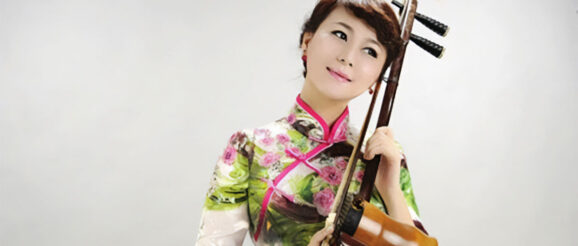Da Tong in Chinese Music: A Blend of History and Innovation – China Underground

Last Updated on 2023/11/26 The Da Tong (大筒): A Comprehensive Overview of the Traditional Chinese String Instrument Da Tong (大筒), also known as Huagu Da Tong (花鼓大筒) due to its predominant use in Hunan Flower Drum Opera, is a traditional Chinese string instrument popular in most regions of Hunan province. Its shape is similar to the Erhu, but it is named for its larger and thicker sound cylinder. The Da Tong is not only a primary accompaniment instrument for the Hunan Flower Drum Opera but also used in Changsha’s Sha Si Xian and Qiyang Xiaodiao. The instrument’s history can be traced back earlier than the Qing dynasty, with its origins possibly not as ancient as the Banhu or Jinghu but still significant as an accompaniment in operatic music. Historically known as the “Gu Jiao” in the Song Dynasty, the Da Tong was initially used as a military horn and an instrument in the ceremonial parades of nobility and local officials. It became widespread in Fengqing’s folk music, thanks to its use in military music. Da Tong comes in two traditional forms: the “short cylinder” and the “long cylinder”. The short cylinder variant, similar in appearance to the Jinghu, features a bamboo neck and cylinder with a snake skin cover. The long cylinder variant has a cylinder length of about 25 cm and a shorter wooden neck, producing a deeper and more muffled sound. Significant innovations were made in the 1950s with the development of the modern Da Tong, which measures approximately 82 cm in length. The modern variant features a bamboo cylinder covered with local snake skin types like cauliflower snake and black-tipped snake, a rosewood neck, and sorghum straw bridges. Silk strings have been replaced with steel ones, and a base support has been added under the cylinder. In terms of playing styles, there are three primary methods: sitting with legs flat, sitting with one leg over the other, and standing. The flat leg style is commonly used in ensemble and accompaniment settings, while the one-leg-over style is preferred for solo performances due to its stability and ease of play. Standing style is rarely used in performances and mainly for practice. Da Tong’s performance requires a natural and relaxed upper body posture, with balanced shoulders and an expressive face. The instrument’s sound is deep and loud, capable of carrying for miles without a fixed pitch, and it produces a distinctive “buzzing” sound. From a historical perspective, Da Tong, also known as “Gu Jiao” in ancient times, has been mentioned in various historical texts. Song Dynasty scholar Chen Yi wrote about “Gu Jiao” in his book “Music Book,” indicating its origins in the Tang Dynasty. The “Gu Jiao” was a general term for string and plucked instruments during that era. By the Ming and Qing dynasties, it had become a key instrument in folk operas and ensembles, and it was only in modern times that it was renamed Da Tong. The development of Da Tong post-1950s mirrors other Chinese string instruments, evolving to closely resemble the Erhu in structure. It can be made from selected bamboo or pieced together from Nanmu bamboo, forming a hexagonal or octagonal shape covered with snake skin. The neck can be made from bamboo or rosewood, and the strings have been switched to steel for better sound quality and stability. Materials used in Da Tong making include high-density rosewood for the top-quality instruments, with various woods like ebony, chicken-wing wood, and others also being used. Python skin is used for the membrane, contributing significantly to the sound quality. The neck must be strong and resilient, typically made from a single piece of quality wood to withstand the tension of the strings. The bow, an essential tool for playing the Da Tong, is usually made from bamboo with horsehair. It needs to be of the right weight, length, and flexibility for effective playing. The quality of the bow significantly impacts the sound and playing experience. Source: Baidu Baike Table of Contents
